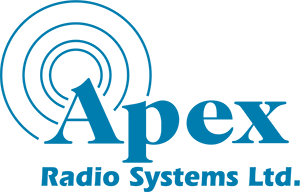Mobile Two Way Radios
Transform your vehicle into a communication hub with Mobile Radios – essential transceivers for in-vehicle radio communication. Perfect for taxi companies, shipping services, and logistics, these radios draw power from the car’s electrical system.
Explore our extensive selection of analogue and digital mobile radios featuring renowned brands such as Motorola, Hytera, Kenwood, Icom, Sepura, and Vertex. While setting up mobile radios can be complex, requiring special installation and an Ofcom license, we’ve got you covered.
Ready to upgrade your on-the-go communication? Contact us today to place your order or seek expert advice on mobile radios.
VHF vs UHF
Before installing mobile radios you need to know a distinction between VHF (very high frequency) and UHF (ultra high frequency). For instance, VHF radios would fit taxi drivers more as they operate in the open areas. While forklift operators would need UHF version as they operate indoors and UHF can penetrate concrete or steel walls.
Eyes on the road
We regularly install mobile radios in a vehicle’s control panel for drivers who cannot hold a handheld radio while on the road. The setup becomes extremely useful as drivers can pick up the handheld microphone and respond to a call if needed. No distraction while driving.
Even more, some mobile radios have speaker-microphone with a push to talk button and noise cancelling microphones. These reduce the usual driving noise.
Types of antennas
Mobile transceivers need an antenna which connects to the main device. The type of antenna you pick will depend on the type of vehicle you are installing it into. If you need to put it on a metal roof then a Magmount Antenna is best as it simply sticks to the top of the roof. If you need standard coverage then a ¼ Wave Antenna would be a good choice. If you have a GPS style system in place to track location etc. you can get a GPS Antenna.
Contact us
As mentioned before, this type of mobile setup is quite complex. Give us give us a call: 01912280466 to discuss any questions you have.
The main difference between a licence-free and a licenced radio is the requirement of an Ofcom licence to operate the device. The licence gives you a unique frequency to operate your radios legally and securely.
Licence-free radios are often cheaper to purchase than licenced radios as they come ready to use out of the box. However, as they are out-of-the-box ready, anyone can operate on the same frequency, which can mean anyone operating a licence-free radio, in range, on your channel will be able to listen to your conversations, and vice versa, meaning potential issue for the safety and protection of staff.
Traditionally, analogue radios have provided reliable communication between team members, but digital radio has far expanded the capabilities of two-way voice communications. Digital radios provide superior voice quality at the reaches of coverage areas, double the capacity of an existing 12.5 kHz channel and up to 40% longer battery life on a single charge.
VHF stands for Very High Frequency, whereas UHF stands for Ultra High Frequency, and it’s important to understand the difference when searching for your radio solution. Radios operating on VHF frequencies work best on minimal obstructions and have a good line-of-sight for communication. VHF frequencies become weaker and aren’t as effective with obstructions. A UHF radio would be more suitable in cases where there are many dense, solid objects between users, although they have less range. There’s also a wider number of frequencies available to UHF, which means there’s less chance of interference from other systems.
A hand-portable Radio is a battery-operated portable communication device carried by hand or via accessories to clip onto clothing. Desktop/Mobile two-way radio works similar to a hand-portable radio; however, it is in a fixed location, either in a car or on a desk and requires main power. Mobile or Desktop radios are suitable for vehicles, control rooms or in a fixed office location.
